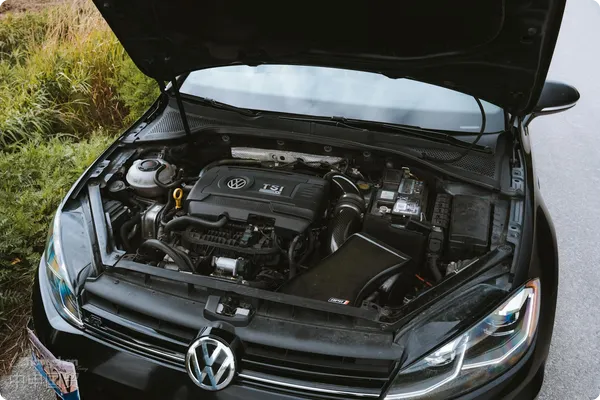- Shanghai Zhongshen International Trade Co., Ltd. - Two decades of trade agency expertise.
- Service Hotline: 139 1787 2118
In theforeign tradeIn business,Automotive partsimport operations often involve many complex processes and details, especially for first-time importers, where customs clearance speed and compliance are top priorities. If your company is struggling with the import and delivery of auto parts, we are willing to leverage our 20 years of agencyimport and exportservice experience to help you smoothly clear customs and ensure your goods reach customers promptly and safely.
I. Specific Process for Auto Parts Import
HS Code Classification and Documentation Preparation
For smooth customs clearance of each shipment, the first step is confirming the HS code. Based on the name of the automotive parts,Classification of Customs Codesafter determining the code, check the corresponding tax rate, declaration elements, and regulatory conditions. Accurate HS code classification is crucial for ensuring smooth customs declaration, which also helps avoid port delays or penalties due to misdeclaration.
Document Preparation and Cargo Transportation
According to the previously confirmed declaration elements and regulatory conditions, prepare the corresponding supporting documents. After preparing the relevant materials, transport the goods toMaritime TransportationShanghai Outer Port. Note that document accuracy directly affects customs declaration efficiency, so its recommended to strictly comply with regulatory requirements when providing materials.
Destination Port Customs Declaration
After goods arrive at Shanghai Waigaoqiao, they enter thedestination port customs declarationphase. Submit contracts, invoices, packing lists, and other relevant documents to customs, ensuring all documents are complete and correct to expedite clearance.
Commodity Inspection and Tax Payment
After customs declaration, goods must undergo commodity inspection and customs examination. If no issues are found, customs will issue a tax bill, and the seller must pay the corresponding taxes. After tax payment, await further customs inspection and release.
Domestic Transportation and Delivery
After goods are released, we will arrange domestic transportation to safely deliver the goods to the clients designated warehouse, ensuring a smooth transportation process throughout.

II. Customs Declaration Information Overview
To help you better understand specific import procedures, below is partial information from aCustoms Import Declaration Formfor a sample shipment:
- Transportation method: Waterway Transport
- Country/Region of Origin: India (IND)
- Port of Entry: Shanghai Waigaoqiao (310701)
- Number of Packages: 14
- Gross Weight (kg): 2000
- Net Weight (kg): 649.49
- Transaction Method: CIF (1)
- Supporting Documents and Numbers: Including invoice, packing list, bill of lading/waybill, contract, paper customs declaration agency agreement,It is recommended to verify through the following methods:According to the document
Product Details
The imported goods this time areAutomotive parts, below is the specific information for each type of accessory:
- Fuel Tank Assembly 50L TSI
- Specifications and Model: Applicable to SKODA SUV/1.0L/1.5L/1.6L, YAPP, 5QP. 201.021.B and C
- Quantity and Unit: 32 pieces, 265.6 kg
- Country/Region of Origin: India (IND)
- Domestic destination: Yangzhou City, Jiangsu Province
- Tank Welding Assembly
- Specifications and Model: Applicable to SKODA SUV/1.0L/1.5L/1.6L, YAPP, 5QP. 201.021.B
- Quantity and Unit: 14 pieces, 82.18 kg
- Country/Region of Origin: India (IND)
- Fuel Tank Body
- Specifications and Model: Applicable to SKODA SUV/1.0L/1.5L/1.6L, YAPP, 4972-0041-00
- Quantity and Unit: 5 pieces, 23.5 kg
- Country/Region of Origin: India (IND)
- Screws
- Specifications and Model: Stainless steel, 801MPa, Fontana, N.106.998.01
- Quantity: 40 pieces
Special Considerations for Automotive Parts Import/Export
In the import and export process of automotive accessories, in addition to regular operational procedures, there are some special matters that require extra attention:
- Accuracy of HS Codes: There are numerous types of automotive accessories, and different parts correspond to different HS Codes. Therefore, it is essential to ensure the accuracy of the HS Code for each accessory to avoid additional costs, port delays, or penalties due to incorrect coding.
- Certificate of Origin for Accessories: For imported automotive accessories, a Certificate of Origin may be required to ensure compliance with origin rules and to benefit from preferential tariff policies. When preparing documents, make sure the Certificate of Origin is correct and valid.
- Preparation for Commodity Inspection: Automotive accessories involve product safety and quality. During the commodity inspection process, the specifications, models, manufacturer information, etc., of the accessories must be clearly marked and comply with relevant standards. Conducting pre-shipment inspections to ensure quality compliance can facilitate smoother customs clearance.
- Estimation and Payment of Import Duties and Taxes: When importing automotive accessories, it is necessary to estimate the potential tariffs and VAT involved. Since different types of accessories may have different tax rates, understanding these in advance and preparing a tax budget can aid in financial management and smooth import operations.
- Product Compliance and Certification: For certain special automotive accessories, specific certification standards, such as environmental or safety standards, may be required upon import. Therefore, sellers should familiarize themselves with the regulatory requirements of the importing country in advance to ensure all accessories meet the relevant certifications.
Conclusion
With 20 years of extensive agency experience,ZhongShen International Tradewe have a thorough understanding of the import processes, documentation requirements, and operational details for automotive accessories, enabling us to assist you in quickly completing import deliveries. In the import process, from HS Code classification and document preparation to commodity inspection, tax payment, and finally domestic transportation, we provide one-stop services to ensure your goods clear customs smoothly and are delivered promptly.
Related Recommendations
? 2025. All Rights Reserved. Shanghai ICP No. 2023007705-2  PSB Record: Shanghai No.31011502009912
PSB Record: Shanghai No.31011502009912







